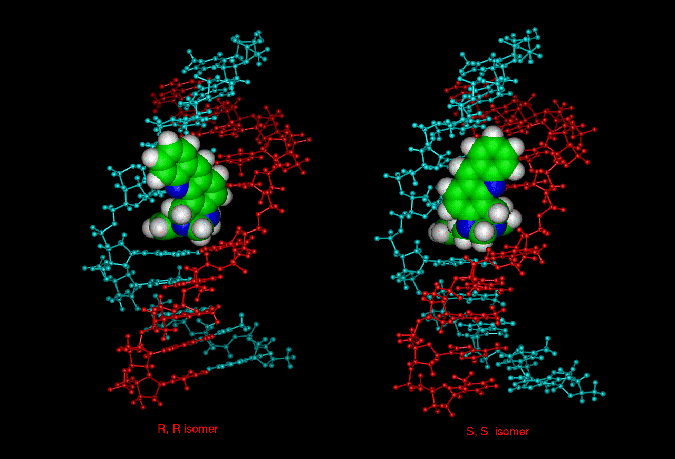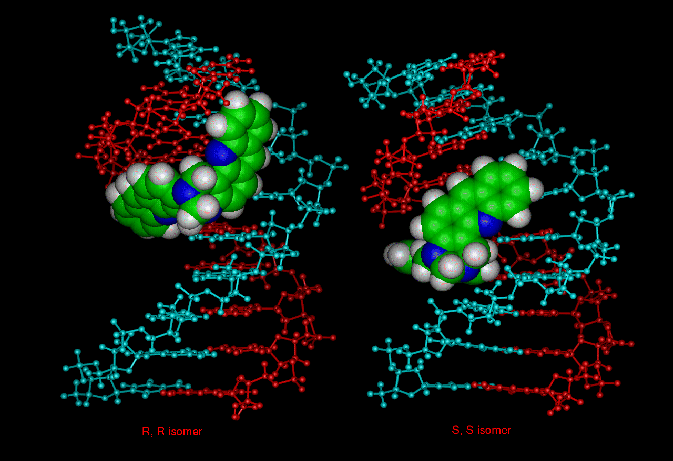Tröger's base as a DNA chirality probe
(R,R) and (S,S) enantiomers interact with DNA both by intercalation and by groove binding in different
modes. Two examples are presented here.
Mode 1
One acridine ring is intercalated between adjacent base pairs, the other acridine being set in the minor
or major groove. Intercalation with minor groove interaction is shown below:

Mode 2
The second mode involves binding of both acridine moieties in a groove. Major groove interaction is shown below:

Molecular modelling predicts a selective recognition of Tröger's base enantiomers by DNA.
The enantioselectivity depends on the modes of binding and on the DNA sequences.
References
Y. Coppel, Ce. Coulombeau, C. Coulombeau, J. Lhomme, M. L. Dheu-Andries, P. Vatton,
J. Biomol. Struct. Dyn., 1994, 12, 637.



